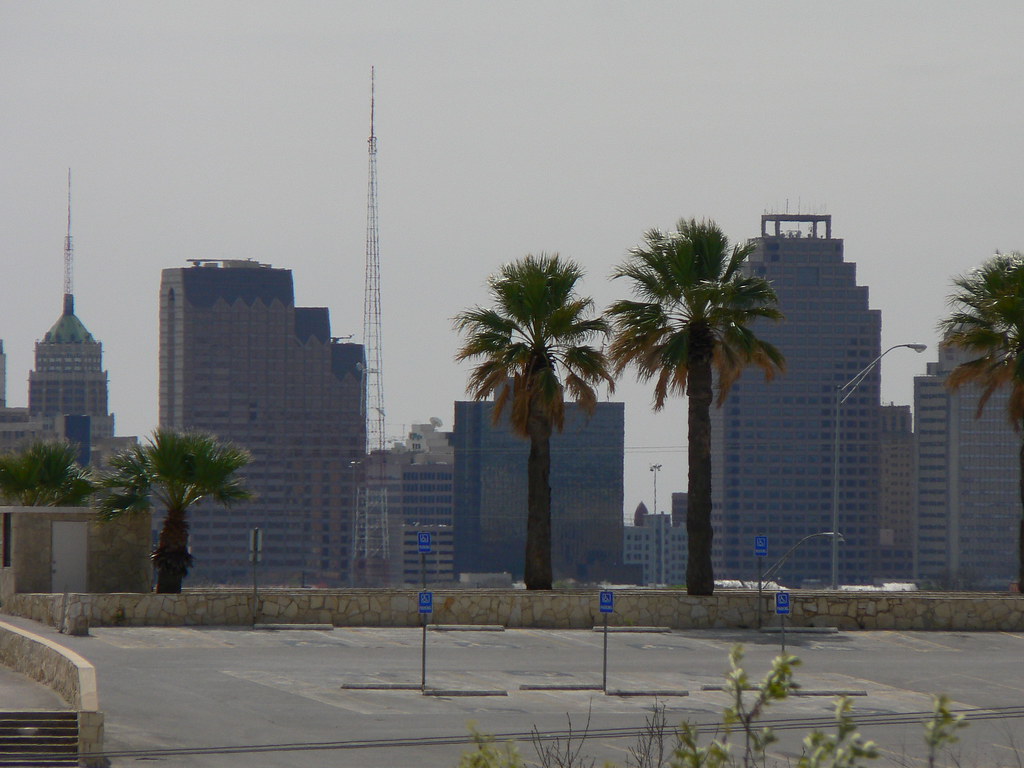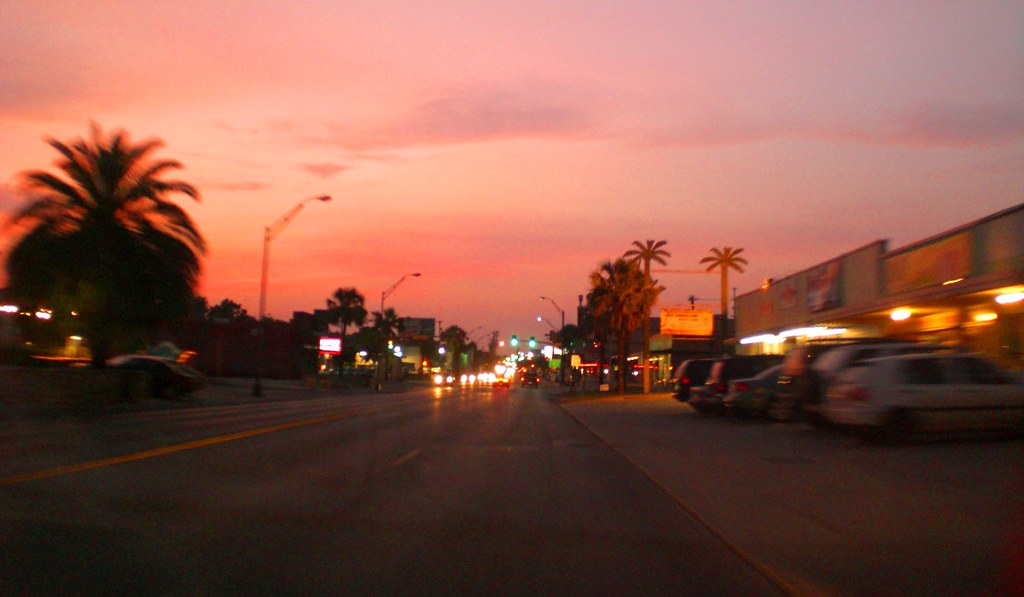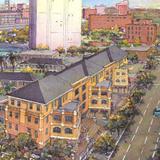
kingwilliam
-
Posts
90 -
Joined
-
Last visited
Content Type
Profiles
Forums
Events
Posts posted by kingwilliam
-
-
It just always seems that way. The south sides of a lot of cities aren't seen as desirable as the north sides. Chicago, Los Angeles, and Pittsburgh are other examples.
South side Chicago isn't seen as undesirable. As for LA, what do you call their "South side"?
Your right about them switching off yearly, but if you look at the total numbers from 2000-2006, they don't switch off.Though that wasn't my point, was it? Why can't you just ever stay within the frame work of a post?
-
It is because South Dallas is not really desirable. It isn't that it is predominately Black (though it may have something to do with it). The south sides of many cities always are like that. Same thing for Houston, SA, Atlanta, etc.
Wow. You just continue to amaze. Firstly, whether the "south sides" of any city/metro are "undesirable" is simply a matter of coincidence, please don't assert it as some type of consonant.
I disagree. Austin is ahead by a good 30,000 in terms of growth (raw numbers) from 2000-2006. Though SA's growth has been steady at about 30,000-34,000 every year. Austin had that one big year in 2000 which pushed it so high.Your comment wasn't about total growth numbers since 2000. You said x metro was growing faster than San Antonio. I simply clarified it by saying both metros have been going by switching positions in terms of growth (for the last few years). Nothing to "disagree" with when it's clearly simply facts.e
-
Because the part that I'm talking about is really low density.
Is there an uncontrollable reason for that?
-
For all intents and purposes, it doesn't exist.
Because it's primarily black?
-
SA has military bases, Dallas has south Dallas. But even factoring out the military bases from SA, its 382 to 345.
Yes, still a difference but not a gigantic one for that matter.
P.S. I'm not too familiar with Dallas, what is the problem with south Dallas?
-
407 to 345. But when you take into account that SA is home to current military installations (Fort Sam, Lackland) and 2 former military installations (Brooks, Kelly) that take up thousands of acres each you have to believe if those were traditionally developed the city population would be much more. It's something like 16,000 acres of land with just about 200-300 people living on those 16,000 acres. Kelly AFB is now Port San Antonio and Brooks AFB is now Brooks City-Base. That's just within the city limit, metro wise there are two other military installations.The City of San Antonio has more square mileage than the City of Dallas.
Well, it's a back and forth match for third in that list.Dallas-Fort Worth, Houston, and Austin's metro areas are all growing faster than San Antonio. Yes, SA's city limits may be ahead, but not its metro area. -
Cool development. How many people do they expect to be living there?
It depends how many residential units there is. If I had to guess, there's probably going to be anywhere in the neighborhood of 15,000-20,000 homes/units.
-
Cumberland has released a master plan for their 3,220-acre mixed-use Westpointe community that will be built in far West SA/Bexar that'll lie between Alamo Ranch (to the north) and Stevens Ranch as well as Redbird Ranch (to the south).
Westpointe East
Westpointe North and West
For reference, here is the pre-Cumberland site plan for Westpointe. this shows where Westpointe East (lower right) is in relation to Westpointe North and West.

-
Tacara
-
Size: 900,000 Square Feet
-
Location: Stone Oak Parkway and 281
-
Details: 900,000 square feet of retail, entertainment, office, restaurant, and residential space. Completion of Tacara is set for fall 2009.





-
Size: 900,000 Square Feet
-
The Reflection
-
Size: 500,000 square feet
-
Location: Blanco Rd. and Huebner Rd in Stone Oak.

The Reflection will span roughly 500,000 square feet of space at Blanco and Huebner. Multifamily development will account for roughly half of the space in the project. The average unit will be 1,200 square feet. A multilevel parking garage in The Reflection will include some gated spaces that are to be set aside for The Reflection's residences.
Plans for the entertainment portion of The Reflection include an amphitheater for outdoor evening events, and a boutique theater that could feature first-run and independent movies. All of the restaurants in the project will include outside seating -- making them the key entertainment venue of the project. REOC, the developer, is also in talks with some high-end hotels for the development.
Rounding out The Reflection will be several traditional store-front office tenants. Office users could include title companies, real estate firms and advertising agencies.
-
Size: 500,000 square feet
-
Does the heart of the growth pattern in west san antonio contain more plans for 1604? The current highway expansion project will be woefully inadequate the minute the asphalt is dry. Looks like all the farm and ranch land to the SW is getting carved into more development, and there still aren't solutions for 281 north.
I hate to see San Antonio repeating the same growth patterns as Houston with the same predictable consequences. And, road access is already more limited by terrain and the recharge zone. A few more years, we'll have to be as far as Junction to be out of the SA suburbs.
I'm not sure what the transportation plans are for 1604. But there is so much going on along the 211 stretch from 90 to Potranco. There are four developments that will bring over 4 million square feet of retail (The Orchard being one) alone, Briggs Ranch, Redbrd Ranch and Stevens Ranch. Along 90 closer to 1604 there's masterplanned subdivisions West Meadows, Applewood Ranch and Luckey Ranch.
-
(West San Antonio) - Dallas-based Cumberland Investments recently closed on the purchase of 565 acres of land at the northwest corner of State Highway 211 and U.S. Highway 90 on the city's West Side. Cumberland is working to create a master-planned community on the site, to be called The Orchard, according to Deborah Bauer, president of San Antonio real estate firm Drake Commercial Group LLC. As part of that master plan, Cumberland has carved out 300 acres for a power center that could include a mix of garden offices, hotel development and retail users. The Orchard is situated in "the heart of the growth pattern" for the city's West Side, Bauer says. "The site sits directly on (Hwy.) 90 and captures the traffic all the way from here to Castroville, and the going-home traffic on (Hwy.) 211," she adds.

-
Tesoro HQ
-
Location: 281 and Redland Road
-
Size: 600,000 square feet



-
Location: 281 and Redland Road
-
Vidorra
Twin highrise development in the East Town District of San Antonio.
Renderings


Construction Photo

-
Idaho company targets Westover Hills for new development
San Antonio Business Journal - by Tricia Lynn Silva
One of the city's largest employment hubs has garnered the attention of a Boise-based development firm making its move into San Antonio.
DBSI Development has announced plans to create a new mixed-use community on the city's far West Side. The project, christened Escala, will span 80 acres of land along the northwest corner of Military Drive and State Highway 151, in the Westover Hills community.
Escala is DBSI's first project in San Antonio.
At present, what DBSI envisions for the acreage is a master-planned project that would include a mix of office, hotel and retail venues, Blaine says. Some multifamily projects could potentially be brought into the mix as well.
DBSI could develop some portions of the Escala tract itself, Blaine adds. The firm would also entertain selling off sites to other developers.
All told, Escala could encompass anywhere from 650,000 to 1 million square feet of development, Blaine says.
Over the next six months, DBSI will begin putting in the roads and other infrastructure for Escala. During this time, the firm will also work to get a handle on how to best develop the site, Blaine says.
According to Ballard, Escala has already garnered the attention of two hotel developers -- one looking to build a mid-priced brand, and one with an interest in bringing a high-end name to the site.
And as DBSI looks for new opportunities in Texas, San Antonio will indeed be one of its target markets.
Blaine says his firm has also begun some pre-planning work for a 61.2 acre tract of land at the northeast corner of Interstate Highway 10 East and Loop 1604 on the far East Side.
Says Blaine: "We are looking very hard in the San Antonio area."
-
OK, silly fussing about the name aside, welcome to the board and thanks for the San Antonio updates. A bit of a side issue, but all the renderings show palm trees. Aren't they unusual in San Antonio?
Palms trees are definitely not unusual in San Antonio.






-
St. Benedict's Condominiums
-
Residential: 100 units
-
Retail: 10,000 Square Feet
-
Office: 5,000 Square Feet
-
Location: Southtown

-
Residential: 100 units
-
A four-story tower fronts onto St. Mary's Avenue. Two 2-story entry portals open onto St. Mary's providing street level pedestrian access through the site to the San Antonio River Walk beyond. Three towers of 3-stories each are oriented perpendicular to the River Walk and terminate at the river's edge. The towers form urban courtyards in keeping with the cities rich tradition of creating public spaces while allowing public access to the River Walk.
-
-
Retail: 110,000 Square Feet
-
Office: 54,000 Square Feet
-
Residential: 34 Units
-
Location: Ralph Fair Road and I-10 (23 miles northwest of downtown)



-
Retail: 110,000 Square Feet
-
 2 deals announced
2 deals announcedWeb Posted: 11/30/2007 08:34 PM CST
Creighton A. Welch
Express-News Business Writers
An emerging player in medical office real estate is going to boost its portfolio by at least 300,000 square feet with two San Antonio health-care buildings, in the South Texas Medical Center and Stone Oak.
As part of a 69-acre mixed-use project announced Friday, called Agora Palms, DAG Healthcare, a division of San Antonio-based Dominion Advisory Group Inc., plans to build medical offices on what is one of the largest undeveloped land tracts left in Stone Oak. The site is north of Loop 1604 and sandwiched between Hardy Oak Boulevard and U.S. 281.
-


Cibolo Canyons is a 2,800-acre, mixed-use masterplanned community in far north/northeast San Antonio. The main feature of Cibolo Canyon will be the PGA TPC Resort that will house two 18-hole golf courses designed by Pete Dye and Greg Norman respectively. The centerpiece of the TPC Resort is a 1,000 room JW Marriott hotel.
Cibolo Canyons
 JW Marriott
JW Marriott


-
I also would like to say I added some posts in the San Antonio section so please give it a quick scan.
-
Cevallos Street [Mixed-Use Development in the SoFlo District]
Providing much-needed downtown residential development combined with commercial infill, Cevallos Street is envisioned as the "magic link" connecting the established Southtown Arts District and the emerging SoFlo district. 500 apartments and townhouses will create a residential neighborhood along Peden Street. Parts of Peden Street previously lost to development are planned to be brought back to match historic contours, connecting South Flores Street and the San Antonio River.
Four-story buildings are planned to wrap around 400- space parking garages, presenting a lively facade to Peden Street (instead of parking decks). Planned amenities are generous: swimming pools and recreation spaces are nestled in courtyards within the buildings, and roof decks extending out from living spaces will provide panoramic views of the surrounding city.
Ground floor commercial space fronts the street on the East side of the development, and interacts with existing neighborhood commercial space at the corner of Cevallos and Probandt Streets. At the West end of the site, Peden Street continues through to South Flores as a pedestrian corridor and accesses South Flores at multiple locations, providing a healthy amount of circulation.
The architectural expression of the planned buildings responds to the variety of forms and materials present in the surrounding industrial and warehouse buildings. Facades are developed with an urban vocabulary of corrugated steel, stucco, split-faced concrete block, and aluminum storefront system.
The development is split into two phases. Phase I is roughly the Eastern half of the site. Both phases are expected to be complete by late 2010.
Additional Information:
-
SoFlo stands for South Flores street. South Flores street is just south of downtown and adjacent to the arts district of Southtown. It's a former industrial warehouse area that is slowly (well, picking up major pace recently) transforming into an urban loft district with retail and office. Many of the former warehouses have been transformed into lofts and condos. One example is the South End Lofts.








The Alamo City
in San Antonio
Posted
Then say that, don't say one thing and then explain it's not what you meant. Saying it's undesirable is completely different from saying it's not as desirable as X.
I guess you're talking about South Los Angeles as LA doesn't use a "south side" or "north side" type naming system. But even still, it's all a coincidence.
Because this isn't the first instance you've done that. You have a very hard time with keeping with the context and framework of posts.